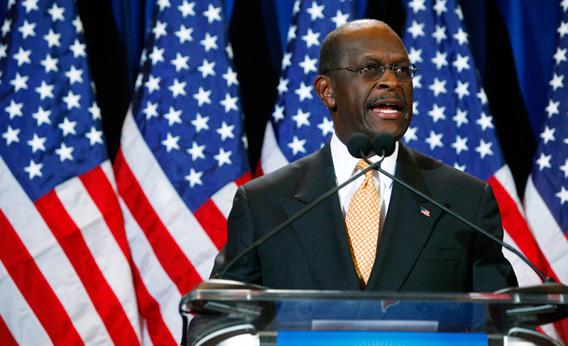One of the women who accused Herman Cain of sexual harassment while at the National Restaurant Association received a $45,000 settlement. A second accuser settled for $35,000. What’s the going rate for sexual harassment claims?
It’s about what the National Restaurant Association paid to these women. Many litigants reach a confidential settlement before completing a trial, so tabulating statistics about sexual harassment claims is very difficult. One study looked at 50 sexual harassment settlements (PDF) in cases before Chicago magistrate judges, and found that amounts average around $53,000, with a median of about $30,000. Employees who take their case to trial—and win—fare significantly better, averaging more than $217,000, according to a separate study. That ratio is normal in employment litigation: Settlements are typically around one-quarter the size of trial verdicts. (The plaintiff wins in about 40 percent of the employment-related cases that make it to the jury.)
Sexual harassment claims are notoriously difficult to monetize. Some employers successfully fought off cases through the mid-1980s by claiming that Title VII of the Civil Rights Act of 1964 doesn’t apply to cases of a “hostile work environment”—the kind of sexual harassment that doesn’t result in firing, loss of promotion, or other negative actions—because the plaintiff hasn’t suffered any tangible or economic loss. The Supreme Court rejected this argument in the 1986 case Meritor Savings Bank v. Vinson. The justices took sexual harassment a step further in a later case, in which Justice O’Connor wrote, “Title VII comes into play before the harassing conduct leads to a nervous breakdown.”
Since then, lawyers have struggled to find a basis on which to conduct settlement negotiations. As with any litigation, the plausibility of the claim influences the amount. Employers are unlikely to settle a claim they’re convinced they could beat in court for anything more than a “nuisance” payment of some $5,000 or so. (Kraushaar’s settlement was well in excess of a typical nuisance settlement.) If a plaintiff actually files her claim in court, forces the employer to respond to a couple of motions, and survives a motion to dismiss, the settlement will be higher as a result.
Many law professors have found that the duration and severity of sexual harassment has little impact on the value of a settlement or verdict, but there’s an exception to this rule: Quid pro quo harassment, in which a superior trades preferential treatment for sexual favors, usually leads to higher awards.
Kraushaar might have upped her settlement amount if she had joined forces with the other women who accused Cain of sexual harassment. The data suggest that class actions and other cases with multiple plaintiffs are more successful, in part because a judge or jury is more inclined to believe three aggrieved employees than one. The Equal Employment Opportunity Commission is also more likely to intervene on behalf of groups than individuals, and cases with EEOC involvement settle for almost twice as much as those without it. It’s not clear whether that’s because the agency gets involved in only the strongest cases, or if the government’s resources and experience intimidate employers into paying up.
Got a question about today’s news? Ask the Explainer.
Explainer thanks Minna Kotkin of Brooklyn Law School.
